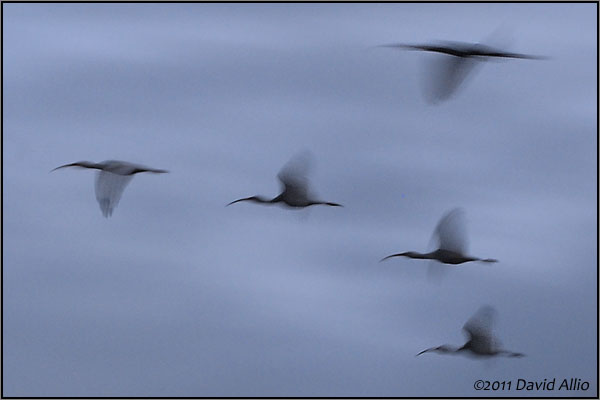Working in motorsports, a visual industry that intimately involves the depiction of motion, leads to creative questions regarding the interpretation of movement in other scenes and subjects. How much is too much?
How important is motion to image interpretation?

Birds in Flight | ©2011 David Allio
A Nikon D60 using an AF-S Nikkor 55-200mm G ED lens was the camera body and lens selected for the production of this photograph. The focal length was 72mm with an aperture of f/8 and film speed 400 ISO. The camera was hand-held at a shutter speed of 1/15th second with the lens VR (vibration reduction) setting "on."
How do those exposure setting relate to the visual interpretation of the final image?
The focal length effectively determined how many bird were included in the scene. The more birds, the more likely just one will destroy the desired symmetry of the composition. These sea birds are not, after all, a precision flying team like the Thunderbirds that train at Nellis Air Force base across the street from the Las Vegas Motor Speedway.
The shutter speed determines how much movement occurs during the exposure. The longer the shutter is open for exposure, the greater the opportunity for movement by the subject. A very short shutter speed could freeze the motion, but would that convey the effect of graceful flight as presented in this photograph?
The final visual production element is the implementation of a technique known as "panning." This is accommodated by moving the camera at the same pace and in the same direction of travel as the subject. Pick one object as the focal point of the scene and move the camera in order to keep that subject at the same position in the viewfinder throughout the exposure. Without panning, the birds would simply appear as undefined dark streaks against the cloudy evening sky.
Why were these exposure settings used for this photo at dusk?
Simple, it was my interpretation of the scene using the available skills – experience – and tools – camera equipment.